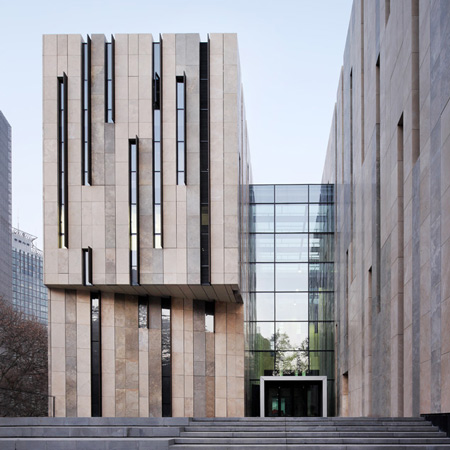
Jiangsu Provincial Art Museum by KSP Jürgen Engel Architekten
German studio KSP Jürgen Engel Architekten have completed an art museum in Nanjing, China, with a series of narrow rectangular slits across the facade.
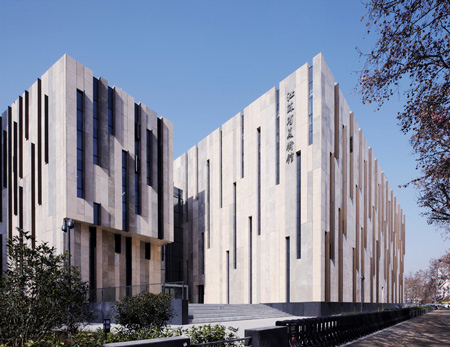
Called Jiangsu Provincial Art Museum, the building features two u-shaped structures which are joined by a central glass-roofed atrium.
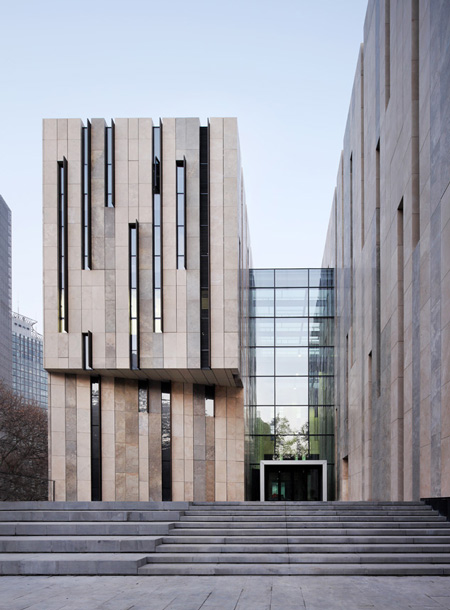
The travertine stone façade is up broken by tall windows, which are shaded by sheet metal panels that jut out at a right angle.
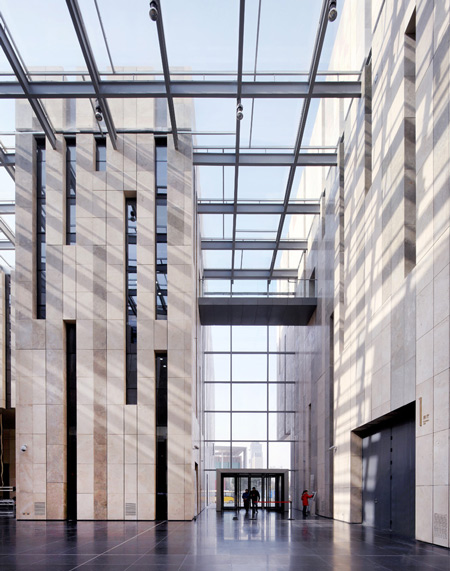
Here's some more information from the architects:
On February 8 the Jiangsu Provincial Art Museum in Nanjing was officially opened in the presence of high representatives of the province of Jiangsu like Liang Baohua, the Secretary of the Provincial Party Committee, Luo Zhijun, the Governor of the province and Zhang Lianzhen, the Chairman of the People's Political Consultative Committee of Jiangsu.
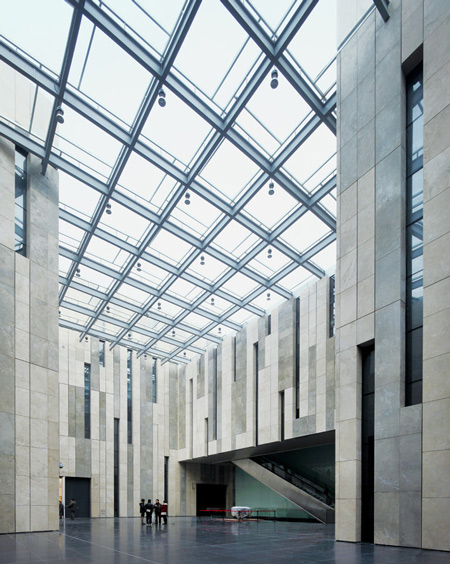
Commissioned by Jiangsu Province represented by the Jiangsu Olympic Center, the museum for traditional, Chinese art was designed by KSP Jürgen Engel Architekten, Deutschland (Peking / Frankfurt/Main), and realized in collaboration with its Chinese partner company Nanjing Kingdom Architecture Design Co. Ltd. Located in the cultural center of Nanjing and in the immediate proximity of the historical Presidential Palace of today’s provincial capital, the new Jiangsu Provincial Art Museum is one of the most important museums in south-east China.
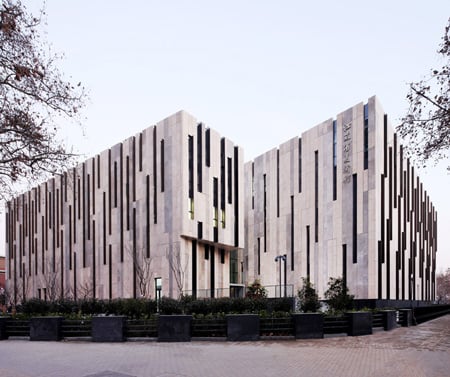
It has space for temporary exhibitions and houses a permanent collection featuring traditional Chinese art, which illustrates the cultural wealth of Nanjing – one of the oldest cities in southern China. The sizeable collection is kept in archive rooms in the Museum, which meet today’s technical and strict conservation requirements. Having previously designed the National Li- brary of China in Beijing, the German company KSP Jürgen Engel Architekten has now completed its second significant cultural building in China.
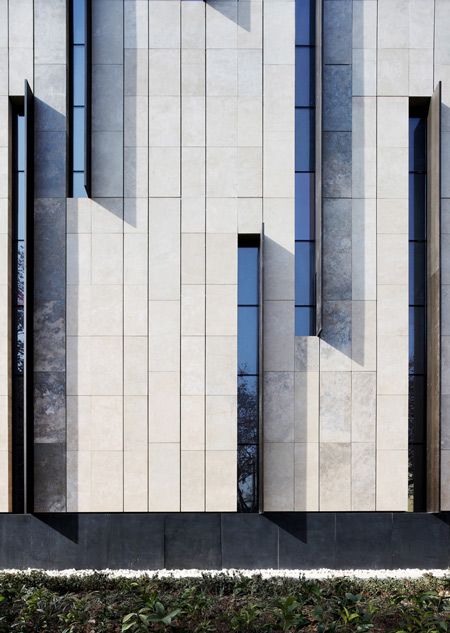
The eye-catching new museum, which won first prize in a competition in 2006, takes up a several urban references from its deeply historical location. The main entrance faces the main city square, Daxing Gong Shi Min Square. In addition, the two structures of the Museum that stand at slight angles to one another follow the two flanking thor- oughfares: Zhongshan (or Revolution) Road, and Changjiang (or Culture) Road. The two interlocking u-shaped buildings also create a space that is covered with a light glass roof.
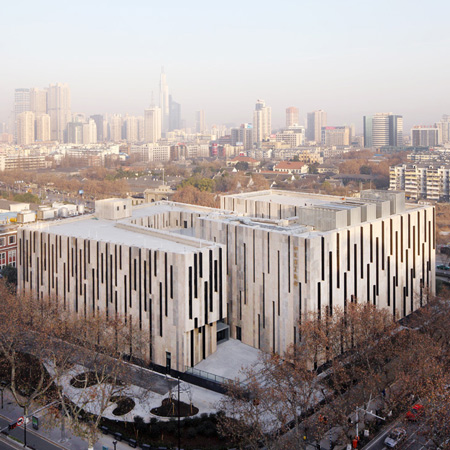
This 17-meter high access area, which narrows at its two main entrances, links the two stone halves of the building and guides visitors into the Museum. In the northern building, clear exhibition rooms of varying sizes offer ideal conditions for presenting the works of art. Two bridges spanning the glass-covered intermediate space connect the exhibition area with the southern element. In addition to training, conference and office space, this building also contains the VIP area and the auditorium with seating for around 400 people.
The travertine natural stone facing with its narrow window indentations obscures the sheer number of storeys and as such reinforces the overall monolithic impression of the museum building. Simultaneously, the alternation between vertical stone panels and window slits with sheet metal jutting out at the sides creates rhythm in the façade. The structural frame and the delicate construction of the glass roof were developed in collaboration with Stuttgart-based German engineers Breuninger.
Facts
Developer: Jiangsu Province, represented by the Jiangsu Olympic Center, China
Partner company: Nanjing Kingdom Architecture Design Co. Ltd., China
Structural engineering: Breuninger Tragwerksplanung, Dr. Ulrich Breuninger
Plot of land: approx. 10,605 m2
GSA: approx. 27,449 m2 (of which 18,210 m2 is above ground)
Competition: June, 2006, 1st prize
See also:
.
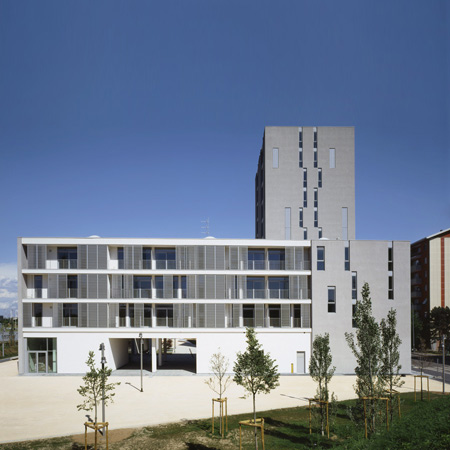 |
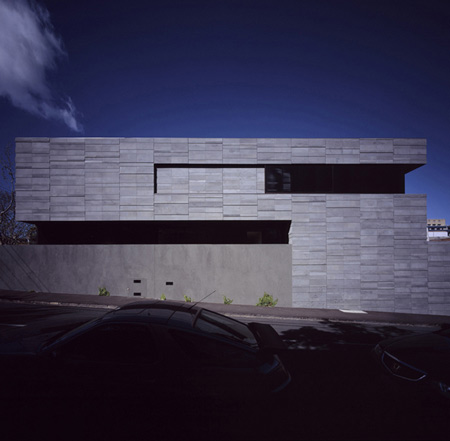 |
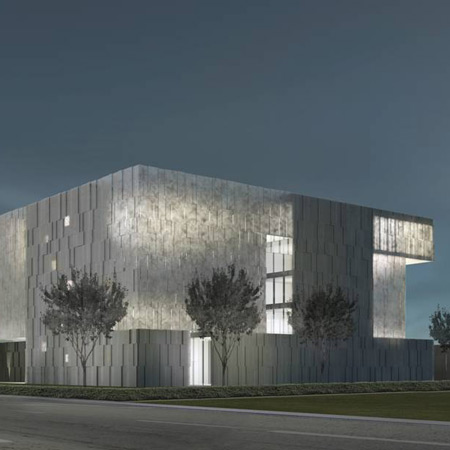 |
| Living in a park by MAB Arquitectura |
57 Tivoli Road by b.e. Architecture |
Moroso headquarters by David Adjaye |